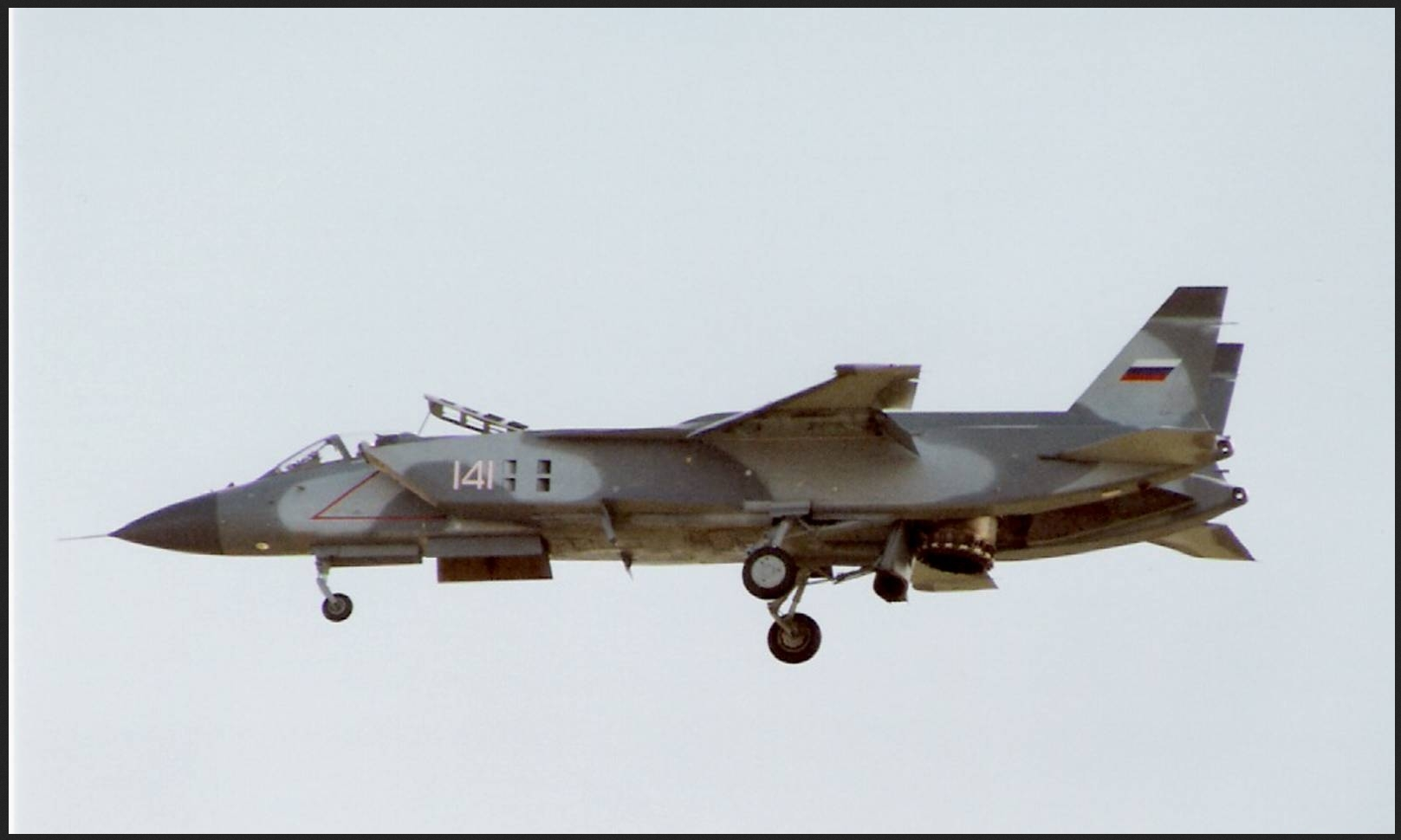Source : http://en.wikipedia.org/wiki/Yakovlev_Yak-141
Operational history (extrait de Wikipedia) ou disparition des budgets militaires aux premières heures de la Russie
Yakovlev obtained funding for four prototypes. The first (48-0, with no callsign) was a bare airframe for static and fatigue testing. The second (48-1, call sign “48”) was a non-flying powerplant testbed. The third and fourth (48-2 and 48-3, call signs “75” and “77”) were for flight testing. While 48-1 remained unpainted, 48-2 and 48-3 were painted in overall grey, with a black radome and fin cap antennas.[1]
The first conventional flight, using 48-2, took place at Zhukovskii on 9 March 1987, with chief test pilot Sinitsyn at the controls. He made the first hovering flight on 29 December 1989 flying 48-3, and used the same aircraft to make the first complete transition from vertical to high-speed flight and vertical landing on 13 June 1990. From April 1991, various kinds of rolling take-off and run-on landings were performed on normal runways and also “ski-jump” ramps at the lift jet center at Saky. Throughout testing the aircraft was found to demonstrate excellent combat maneuvers.[1] Chief test pilot Sinitsyn went on to set twelve new world class records, but as the Yak-41 designation was classified, the records were submitted under the fictitious name “Yak-141”.[1] As a result, the previously unknown aircraft came to be known in the west as the “Yak-141”. In 1992, Yakovlev repainted both flying aircraft in olive/grey camouflage, with the Russian tricolor insignia, and painted a white “141” on both aircraft in place of their previous call signs, “75” and 77″.[1]
On 26 September 1991, Sinitsyn made the first vertical landing on the Soviet aircraft carrier Admiral Gorshkov (ex-Baku) in 48-2. An hour later, Vladimir A. Yakimov landed 48-3 on the same deck. The pilots would go on to make eight flights from the ship until Yakimov made a hard landing on 5 October. The undercarriage ruptured a fuel tank, causing a serious fire. After almost 30 seconds, Yakimov ejected successfully, and was rescued from the sea. The aircraft was later repaired and placed on display (see “Survivors“).[1] That same month the Soviet Navy announced that no further funds were available to continue the program. The factory at Smolensk had anticipated this and had not constructed the tooling for production.[1]
Voir la vidéo d’un crash sur http://www.liveleak.com/view?i=29d_1256477821
